
Ingredient
Garden nasturtium
The Edible Beauty
Garden nasturtium is a flowering plant native to South America that is widely cultivated for its ornamental value and culinary uses. The plant features round, shield-shaped leaves and vibrant flowers in shades of orange, yellow, and red. Both the flowers and leaves are edible and have a distinct peppery flavor with hints of sweetness. The flowers are delicate and can be used whole or as a garnish, while the leaves can be used in salads or as a substitute for basil in pesto.
Origins and history
Garden nasturtium has a rich history that dates back to the Inca Empire, where it was cultivated for its medicinal properties and used as a natural remedy for various ailments. It was later introduced to Europe by Spanish conquistadors and gained popularity as an ornamental plant. Today, garden nasturtium is grown in gardens worldwide and is cherished for its beauty and culinary versatility.
Nutritional information
Garden nasturtium is a good source of vitamin C and contains compounds like glucosinolates, which have been associated with potential health benefits. It is also low in calories and rich in antioxidants.
Allergens
Garden nasturtium may cause allergic reactions in individuals who are sensitive to plants in the Tropaeolum family. People with known allergies should exercise caution when consuming garden nasturtium and consult with a healthcare professional if necessary.
How to select
When selecting garden nasturtium, look for plants or seeds at nurseries, garden centers, or online retailers. Choose plants with healthy leaves and vibrant flowers, and ensure that they have not been treated with pesticides or other chemicals. If purchasing seeds, opt for organic or untreated varieties for the best quality.
Storage recommendations
To prolong the freshness of garden nasturtium flowers, store them in a container lined with a damp paper towel in the refrigerator. They can stay fresh for up to a week. The leaves can be stored in a plastic bag in the refrigerator for a few days. Before using, rinse the flowers and leaves gently under cold water to remove any dirt or insects.
How to produce
Garden nasturtium can be easily grown from seeds in a sunny spot with well-draining soil. Sow the seeds directly into the ground or in containers, following the instructions on the seed packet. The plant thrives in moderate temperatures and requires regular watering to keep the soil moist. With proper care, amateur gardeners can enjoy a bountiful harvest of garden nasturtium.
Preparation tips
Garden nasturtium flowers can be used as a colorful garnish for salads, soups, and appetizers. They can also be stuffed with various fillings or used to infuse oils and vinegars. The leaves can be added to salads, sandwiches, or wraps for a peppery kick. Additionally, both the flowers and leaves can be used to make pesto, adding a unique twist to the traditional recipe.
Substitutions
Arugula, watercress, or radish sprouts can be used as substitutes for garden nasturtium leaves, as they share a similar peppery flavor. However, they may not provide the same vibrant color and visual appeal as garden nasturtium. As for the flowers, there are no direct substitutes for their unique appearance and flavor.
Culinary uses
Garden nasturtium is commonly used in salads, where its vibrant flowers and peppery leaves add visual appeal and flavor. It is also used as a garnish for various dishes, including appetizers, soups, and main courses. In addition, garden nasturtium flowers can be used to make floral-infused vinegars or to decorate cakes and desserts.
Availability
Garden nasturtium is widely cultivated and available in many regions around the world. It is particularly popular in Europe, North America, and Australia. It can be grown in gardens or purchased from farmers markets, specialty grocery stores, or online retailers.
More ingredients from this category
Recipes using Garden nasturtium » Browse all

Mamuang Nam Pla Wan - Tripuri Style Sweet and Sour Mango Salad
Tangy Mango Delight - A Tripuri Twist on Sweet and Sour Mango Salad

Vegetarian Ansim
Savory Veggie Delight: Vegetarian Ansim Recipe
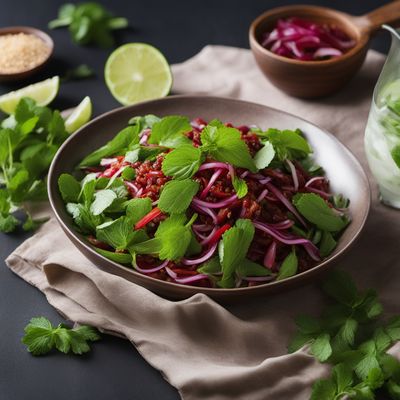
Malaysian Olive Salad
Tropical Twist: Malaysian Olive Salad with a Burst of Flavors
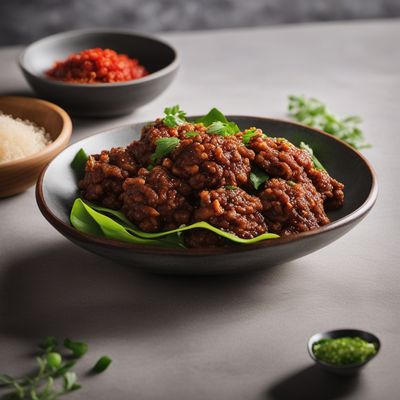
Yacai Bao with a Malaysian Twist
Malaysian Yacai Bao: A Fusion of Flavors
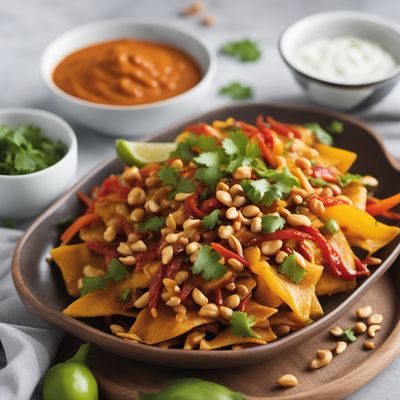
Malaysian Chinese Style Nachos
Crispy Tofu Nachos with Spicy Peanut Sauce
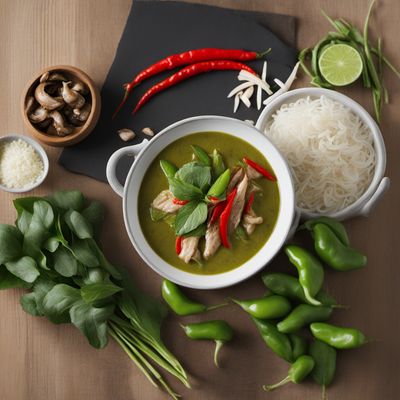
Korean-style Green Curry
Spicy and Savory Korean Green Curry Delight

Hong Kong-style Vegetable Platter
Vibrant Veggie Delight: Hong Kong's Crispy Crunch

Taedong River Mullet Stew
Savor the Flavors of North Korea with Taedong River Mullet Stew

Spicy Thai Jungle Curry
Fiery Flavors of the Thai Jungle
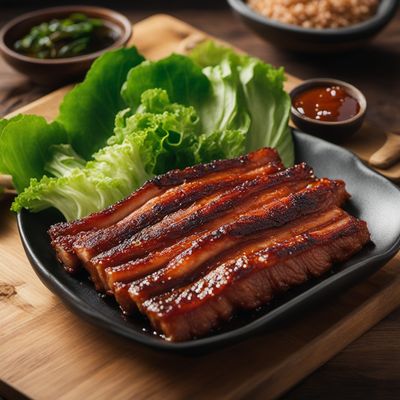
Korean-style Honey Glazed Pork Belly (Samgyeopsal)
Sweet and Savory Korean Pork Belly Delight

Pakistani Chinese Chocolate Gravy
Decadent Chocolate Delight: Pakistani Chinese Style

Tsukemen - Savory Dipping Noodles
Umami Delight: Savory Dipping Noodles with Flavorful Broth
